#Anglican Church Hymns
Video
youtube
🎵 24 Best Traditional Hymns Ever Written

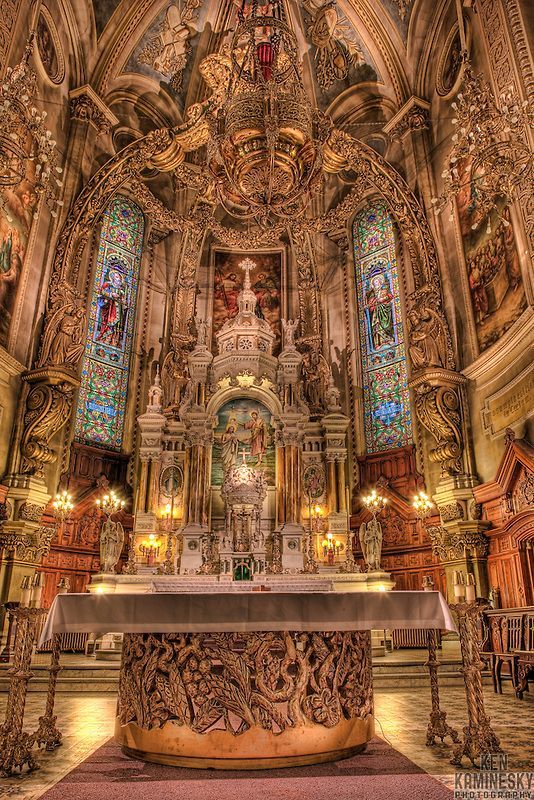
24 Best Traditional Hymns Ever Written
https://youtu.be/sdks6-Bi3A0?si=_v5iqgLoQ3_VYwyx via @YouTube
#youtube#Cathedral oRGAN#Church Organ Hymns#Christian Hymns#Catholic Hymns#Anglican Church Hymns#Episcopal Church Hymns#Meditation Music
3 notes
·
View notes
Text
Midnight Miracle
✧・゚: *✧・゚Merry Christmas/Happy Holidays to those who celebrate! I wish you all a midnight miracle this season :) ✧・゚: *✧・゚
Jane Murdstone x Named fReader
A short Christmas story with our favorite victorian red flag ~2k words
Warnings: Talk of religion and the Anglican church (not in detail)

Wrapped in your ebony cape, you shielded yourself from the biting winter breeze that sent shivers down your spine. Usually the cold didn't bother you, but the wind was extra frigid tonight.
This Christmas Eve, the gaslit streets were adorned with an extra twinkle, buildings and shops aglow with an abundance of candles and festive decorations.
You weren't avoiding spending Christmas Eve with your family; rather, you sought a way to keep yourself occupied, and organizing your books provided a diversion.
The care of your books in your quaint store was where you spent your days. You assumed no one would venture to your store at this hour, dinner time on Christmas eve, still, you left the door unlocked. Amidst the aromatic embrace of cinnamon and pine, you immersed yourself in the quiet world of rearranging décor and organizing shelves, the dim light casting a serene ambiance.
Yet, your thoughts were consumed by a mysterious presence, a certain someone lingered in your mind despite the attempted distraction.
You couldn't stop yourself from wondering about her, you never could. Does she share your passion for books? Does she delight in the written word, perhaps poetry or prose? If so, what about? Does she spend her time writing like you?
You wondered what she could be occupied with now. You envisioned her partaking in a familial feast, while you longed for her presence, a wishful dream in the quiet corners of your mind. Your heart carried the weight of unspoken admiration for her, alas, you couldn't bring yourself to say a word to her, her cold yet enchanting demeanour both unsettled and exhilarated you.
You knew her through shared pews and hallowed hymns at the church, you observed her movements as she entered, sat, listened, prayed, sang - captivated by her every blink and breath.
She was a dark enchantress, her aesthetic seamlessly entwined with yours. Curiosity stirred as you wondered about the facets of her life that mirrored your own and the untold tales hidden behind her mysterious gaze. Perhaps she liked books, perhaps she lacked a husband, perhaps she preferred the company of women.
But alas, such thoughts remained in the realm of wishful thinking, your desires weaving through the fabric of a Christmas Eve both magical and elusive.
✧✧✧
You recollected the first time you saw her. Freshly settled in Blunderstone, you decided to venture to the Anglican church. Running late, you had no choice but to occupy a seat in the back. You leaned awkwardly to the side, nearly falling into the pews edge in an attempt to see the presider.
To your astonishment, a far superior sight unfolded—a raven-haired woman draped in black.
In the midst of prayer and hymns, you found your gaze drawn to her graceful figure, an enigmatic figure. Her dark curls were nestled beneath an even darker bonnet, adorned with silk ribbon. Instantly enchanting, her alabaster skin and, as you later discovered, azure eyes captivated your being. Despite the allure of her elegant stride and the way the corner of her mouth would occasionally turn up into a small smile, you dared not approach the subject of your admiration.
Yet, you dared to indulge in stolen glances, each soft gaze kindling a warmth within your heart.
Sundays held newfound anticipation for you, a shift from previous motives of seeking solace in the congregation.
However, on a recent Sunday, you were left devoid of joy and motivation when she failed to grace you with her presence.
✧✧✧
The ticking of the clock echoed in the shop, and before you knew it, the hands pointed to nearly 11 pm. A sense of joy and fluttering anticipation filled your stomach as thoughts of the impending midnight mass danced in your mind. The magic of Christmas enveloped the church, casting a spell that you could feel.
Heading to the back of your store, you stole a glance out the window, greeted by a gentle snowfall that blanketed the world.
You began extinguishing the candles one by one when the bell on the door rang, breaking the stillness and signalling an unexpected visitor.
You froze, who could be seeking books at this hour?
Slowly peaking through the shelves, it was far too dark to see. Creeping closer, you heard the soft shuffle of someone exploring the books.
You peered around the shelf and there she stood- the woman of your dreams, adorned in a black talma.
A gasp escaped your lips, prompting a swift retreat to the safety of the opposite shelf.
Memories of a previous encounter flooded your mind. Before one Sunday service began, you had ventured out early to pray. You stopped dead with trembling hands when you caught her kneeling with a grace that matched the intricately stained-glass windows. The flickering candlelight cast shadows on her profile, enhancing the allure that captivated you and lived in your imagination.
As she navigated the shadows of the books, you swooned, waiting with bated breath. Why had she chosen your shop? Shouldn't she be with her family, joining the congregation? Then again, you should have been with your own.
"Hello? Are you open for business?"
Her voice, a demanding melody, reverberated in the void of your shop. Your heartbeat quickened, torn between fleeing and standing your ground. This was your shop; you had to summon your strength.
Carefully, you stepped out from behind the bookshelf and surveyed the dark. When your eyes met hers, the unspoken connection between you became a silent dance, a tapestry woven with stolen glances and the shared sanctity of the church pews. You noticed the lack of warmth in her eyes and the metaphorical wall that she had up changed when she saw you. Your heart swelled with agony of unexpressed emotions and the delicate joy derived from the mere proximity of her ethereal presence. In a way, you mourned the unspoken connection, for there was no other option but to abandon it.
"Hi, I-I am open. How can I assist you?" you squeaked, attempting to mask any uncertainty or fear. The woman looked down at you, tilting her head in surprise.
"Amelia? This is your bookstore?"
You opened your mouth to answer, but your words eluded you. She spoke with less arrogance and gentler than you had known previous, but even more, she knew your name?
Of course, you were well aware of who she was, she and her brother were somewhat known in this town as the Murdstones—or, as some whispered, the Murderstones.
Perhaps she could be cruel, perhaps she was deceiving, yet she exuded a sickly sweetness, a captivating beauty in your eyes.
"Well I, yes I do" you nodded.
Jane stood tall, her eyebrows raising. You watched as a smile stretched across her face, and you couldn't help but think that this was the first time you saw her smile, a real smile; it was glorious.
"I must express my relief. I had no doubt that I would be greeted from behind the literature by a man." Jane released a small huff of laughter, and you suppressed a giggle.
"No, it's solely me" you replied with a smile.
Jane continued her exploration of the works, her long, slender fingers delicately wrapping around the spine of each one, caressing them lightly. You were entranced as she moved, perhaps she was a lover of literature after all.
Suddenly, Jane turned to you, furrowing her brows.
"Why are you open at this late hour?"
It was a valid question, why were you open at this hour? Well, for her, of course. But you pondered the same about her—why was she out so late?
"I sought fresh air after dinner, and I found myself here. I've been here for several hours" you chuckled, shrugging in embarrassment.
Jane smiled once more, averting her gaze and running her hand over the cover of a book.
"I'd love to spend several hours in a bookstore."
Silence enveloped you as she opened the book and flipped through its pages. Caught up in the enchantment of her presence, you failed to notice the book title, as your attention was wholly absorbed by the proximity of her features. She stood closer than ever before, her lips twitching as she silently mouthed the words her azure eyes scanned. The soft glow from the festive decorations cast a warm hue upon her, accentuating the grace of her features.
Jane's gaze shifted from the book to you, pulling you shamefully out of your trance.
"Do you plan to attend midnight mass?"
You nodded your head yes. "And you?"
Jane closed the book, cradling it against her chest.;
"Indeed. May I purchase this work?"
As Jane placed the book on the counter, revealing the cover and title, you paused. Running your hand over the leather, memories flooded back, reminiscent of the first time you read it. Unpopular, not for the story's shortcomings, but for its rather...unique allure—it was your favorite.
"Is this title familiar to you?" you questioned.
Jane shook her head, "I have not perused it, no."
You collected her payment and passed the book to her, long fingers grazing against yours. "Thank you."
You smiled and bowed your head, "Thank you for your purchase."
Jane's teeth shone through her smile, and genuine amusement sparkled in her eyes.
"Would you care to accompany me to the midnight mass?" she unexpectedly proposed, catching you off guard.
You blinked with surprise, was she serious?
Jane heard no reply, but she didn't budge, and you hopefully determined that she was.
✧✧✧
You and Jane embarked on a walk down the snow-covered cobblestone streets. You thought about the birth of Christ, the miracle of the season. You thought about the Anglican church and worship, you thought about Jane.
Your eyes sought out Jane's, the only eyes that captivated you, and you realized how lucky you were, for she was your sole companion in this moment. Her gaze met yours, a subtle recognition sparking between you. Jane fluttered her lashes, holding the book against her body with both hands. As you walked side by side, the snowflakes seemed to dance around you, and you longed to hold her gloved hand in yours.
As the midnight hour approached, the distant sounds of Christmas carols reached your ears. The Anglican church awaited, its doors open to those seeking solace and celebration. Together, you and Jane entered the sacred space, the flickering candlelight casting shadows on the ancient walls.
As you knelt in prayer, Jane's presence beside you added an unexpected grace to the sacred ritual, it embraced you. The air was charged with a sense of belonging, a connection that transcended the unspoken desires of wishful thinking.
✧✧✧
After the mass concluded, the two of you stepped out into the crisp night air, the world adorned in a fresh blanket of snow. Jane's gaze met yours under the glow of the moon, and a shared understanding lingered between you. The magic of Christmas had intricately woven a fabric of connection, and the possibility of your souls uniting felt more real than ever.
"This selection is commendable. It happens to be my favorite," you whispered, the words carrying a warmth that defied the winter chill.
Jane's eyes gleamed with a quiet delight, and a genuine smile played on her lips. The church bells chimed, marking the arrival of Christmas Day.
"Perhaps you'd like to take another stroll?" Jane asked, her voice soft against the stillness of the night.
As you and Jane navigated the mysteries of the night, she took a chance and let go of the book with one hand, carefully reaching out for yours.
In that moment, as the world held its breath in anticipation, you realized that the enchantment of the season had not only brought you a magical Christmas Eve, but also the mysterious beauty of Jane Murdstone. It was a midnight miracle.
#gwendoline christie#gwendolineuniverse#jane murdstone#jane murdstone x reader#the personal history of david copperfield#merry christmas#edward murdstone#victorian lesbians#victorian era
92 notes
·
View notes
Text

btw, if you ever wanted a really quick glimpse of how the Dewey Decimal System is biased in favor of white Christian Europeans, just check out the 200s section:
200 Religion 201 Philosophy of Christianity 202 Miscellany of Christianity 203 Dictionaries of Christianity 204 Special topics 205 Serial publications of Christianity 206 Organizations of Christianity 207 Education, research in Christianity 208 Kinds of persons in Christianity 209 History & geography of Christianity 210 Natural theology 211 Concepts of God 212 Existence, attributes of God 213 Creation 214 Theodicy 215 Science & religion 216 Good & evil 217 Not assigned or no longer used 218 Humankind 219 Not assigned or no longer used 220 Bible 221 Old Testament 222 Historical books of Old Testament 223 Poetic books of Old Testament 224 Prophetic books of Old Testament 225 New Testament 226 Gospels & Acts 227 Epistles 228 Revelation (Apocalypse) 229 Apocrypha & pseudepigrapha 230 Christian theology 231 God 232 Jesus Christ & his family 233 Humankind 234 Salvation (Soteriology) & grace 235 Spiritual beings 236 Eschatology 237 Not assigned or no longer used 238 Creeds & catechisms 239 Apologetics & polemics 240 Christian moral & devotional theology 241 Moral theology 242 Devotional literature 243 Evangelistic writings for individuals 244 Not assigned or no longer used 245 Texts of hymns 246 Use of art in Christianity 247 Church furnishings & articles 248 Christian experience, practice, life 249 Christian observances in family life 250 Christian orders & local church 251 Preaching (Homiletics) 252 Texts of sermons 253 Pastoral office (Pastoral theology) 254 Parish government & administration 255 Religious congregations & orders 256 Not assigned or no longer used 257 Not assigned or no longer used 258 Not assigned or no longer used 259 Activities of the local church 260 Christian social theology 261 Social theology 262 Ecclesiology 263 Times, places of religious observance 264 Public worship 265 Sacraments, other rites & acts 266 Missions 267 Associations for religious work 268 Religious education 269 Spiritual renewal 270 Christian church history 271 Religious orders in church history 272 Persecutions in church history 273 Heresies in church history 274 Christian church in Europe 275 Christian church in Asia 276 Christian church in Africa 277 Christian church in North America 278 Christian church in South America 279 Christian church in other areas 280 Christian denominations & sects 281 Early church & Eastern churches 282 Roman Catholic Church 283 Anglican churches 284 Protestants of Continental origin 285 Presbyterian, Reformed, Congregational 286 Baptist, Disciples of Christ, Adventist 287 Methodist & related churches 288 Not assigned or no longer used 289 Other denominations & sects 290 Other & comparative religions 291 Comparative religion 292 Classical (Greek & Roman) religion 293 Germanic religion 294 Religions of Indic origin 295 Zoroastrianism (Mazdaism, Parseeism) 296 Judaism 297 Islam & religions originating in it 298 Not assigned or no longer used 299 Other religions
(found here)
"Christian/Christianity": 25—with many other words and phrases, like "Anglican churches," "Protestants," "Baptist," and "Old Testament," also indicating Christian topics
Judaism: 1
Islam: 1
Most other world religions, clumped together: 1
69 notes
·
View notes
Text
Marauders and their favourite Easter service
James:
Is home for Easter and goes to Easter Sunday at his parents church, a small countryside Anglican parish
It’s high church-ish, vestments and Eucharist but they do a contemporary worship song from last decade as well as hymns, “for the youth”
The vicar is a family friend, he baptised James and was at Fleamont and Euphemia’s wedding
Peter:
Is kind of indifferent, but goes on a Sunday morning to a non-denominational church with his mum, who runs the Sunday school
She gets him to hide the eggs for Easter egg hunt and his marauders adventures come in handy with some GREAT hiding spots
Remus:
This man LOVES a vigil
He was there on Maundy Thursday and you best BELIEVE he’s back on Saturday night
Enjoys the candlelight and silence
Loves to take the graveyard shift in front of the alter
Loves high church Anglo-Catholicism
Sirius:
Professes his atheism (the Black family are Catholics), but goes along to the Saturday night vigil with Remus at an Anglican Cathedral
Realises that Christianity is kind of metal and gets really into it
By Easter Sunday Remus has explained the basics of church history and Sirius races around the church grounds at morning tea declaring himself Anglican and shouting “The bishop of Rome hath no jurisdiction here!”
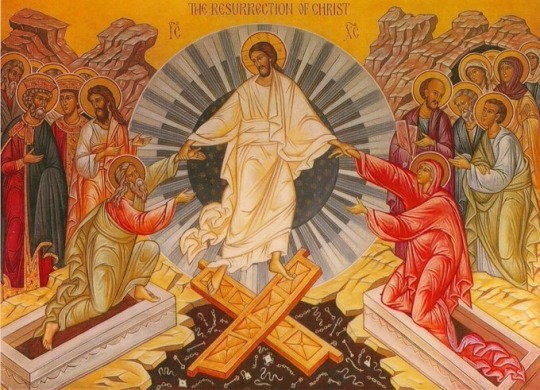
#special interest 2x combo!!#harry potter#incorrect mauraders#marauders#marauders as#marauders era#james potter#peter pettigrew#remus lupin#sirius black#christianity#jesus christ#easter#church#anglican
20 notes
·
View notes
Text
Today in Christian History

Today is Thursday, April 25th, 2024. It is the 116th day of the year in the Gregorian calendar; Because it is a leap year, 250 days remain until the end of the year.
62: Death of Mark the Gospel writer while imprisoned in Alexandria in the eighth year of Nero, according to Vetus martyrologium romanum (an old Roman collation of martyr accounts).
799: Pope Leo III is attacked, his eyes stabbed, and his tongue torn. He recovers and later crowns Charlemagne as emperor.
1449: The ineffectual Council of Basel ends.
1479: Death of Sylvester of Obnorsk, a Russian Orthodox hermit who had lived off roots and bark. Eventually he had established a monastery.
1564: John Calvin, reformer of Geneva, dictates his last will and testament to notary Peter Chenalat.
1595: Death from a fever in the convent of St. Onofrio of Italian poet Torquato Tasso. Ironically, he was supposed to receive a laurel from the pope on this day in recognition of his epic poems, among which Jerusalem Delivered had been the most acclaimed.
1735: Death at Epworth, England, of Samuel Wesley, curate, author, and father of Methodist revival leaders John and Charles Wesley.
1800: Death at East Dereham, Norfolk, England, of English poet William Cowper (pictured above). Despite lifelong depression, he had produced enduring hymns, including, “Oh For a Closer Walk with God” and “There is a Fountain Filled with Blood.” Dementia had led him to believe he was damned.
1879: Consecration of J. B. Lightfoot as Bishop of Durham. A renowned English New Testament scholar, he had left Cambridge and a life of scholarship to devote the remaining ten years of his life to church administration.
1889: Death at Mt. Pleasant, Michigan, of Anzentia Igene Perry Chapman. A member of the Free Methodist Church, she wrote a number of hymns, including, “Thou Shalt Rest at Eve,” and “We’ll Never Say Goodbye.”
1917: Ordination of Paul Sasaki as a priest in the Anglican Church in Japan. He will become bishop of Nippon Sei Ko Kei (an independent church organization within the Anglican Communion), and suffer imprisonment for his refusal to bring Nippon Sei Ko Kei under the authority of a government-ordered church coalition.
13 notes
·
View notes
Note
Do you think Carlisle was still going to church even tho he was a vampire?
I've done a LOT of thinking and research about this, over the years, so apologies for the length here. I actually dropped most of my headcanon about this on the ole' sideblog not too long ago. But since I am 150% committed to the bit over there, there's no room for explaining why my reading leads to my writing that Carlisle thinks a particular way, since he presumably has no knowledge of the text.
A lot of misunderstandings about Carlisle's relationship with religion, IMO, come from trying to view him and his father through the lens of contemporary American evangelical Christianity. Evangelical Christians, as we know them in the US, are a very, very recent development--they date back to roughly the Regan era, and if they claim denominational affiliation (many do not), they are typically Pentecostal, Methodist, or Baptist.
Carlisle canonically is the son of an Anglican priest. This was the 1640s-1660s, and one of his scant human memories is of the Protectorate, meaning that either his father loved Cromwell or hated Cromwell. Given that, plus the rest of what we know about his dad--that he believed in evil, and hunted demons (anachronistic btw), it seems likely that he was a Puritan. Americans are familiar with the separating Puritans as part of our country's founding mythos--the settlers who came seeking freedom to practice their religion and you know whoops just accidentally did a genocide but not before having a big meal with the Wampanoag!
But there was a second set of nonseparating Puritans who stayed in England, and tried to reform the Anglican church from within. So if we take at face value that Carlisle remembers his father as "Anglican," plus the attitudes toward evil and strong memory of Cromwell, this is likely where Carlisle landed. His church upbringing would've been heavy on the fire and brimstone in the preaching, but still based on an order of worship derived from the Catholic service, with an order of confession, weekly readings from the Old and New Testaments according to the lectionary (as opposed to the modern nondenominational practice of reading whatever the heck the pastor feels like/following a newer bible reading schedule), the recitation of the Lord's Prayer and the creed, and music of psalmodys, occasional hymns, fractions and collects. Communion would've been celebrated frequently.
I suspect, that as a vampire, Carlisle still finds a great deal of solace in that worship pattern. It is one of the few things that is very little changed in his long life. I think he pops into an Episcopal church once every couple years, and when a congregation sings the oldest collects, it moves him to what otherwise would be tears because some deep part of his mind remembers the music the same way an elderly patient with dementia would.
So yes, I think he goes on occasion. I definitely meant this kind of as a shitpost when I wrote it, but it also rings true--he still takes seriously the trappings of the faith practices he grew up with. They are meaningful to him. I loved the new canon introduced in MS that he likes popping into churches when the family are out hunting because it felt very in character and also gives him a really delightful soft side.
He doesn't go often. He doesn't feel like he has to. But he still does find meaning in it all, and to him, it still matters.
#long post#meta#asks#Carlisle Cullen#mind you I HATE#the other church related new canon from MS#about the funerals#Stregoni Benefici has a lot of Carlisle in and around church#and I did my level best to make sure it was accurately depicted
12 notes
·
View notes
Text
Of all the things I'd fixate on about Midnight Mass, I didn't expect it to be the hymns, but their use was just jarring to me.
In the PH, Catholic churches use songs in Filipino languages. The churches that use old-fashioned English hymns are the English-speaking Protestant ones, like the non-denominational-but-Presbyterian-or-Methodist-adjacent one I grew up in. It's rare to meet a Catholic here who knows English hymns.
So when "Abide With Me" (by an Anglican) started in Ep. 1 of Midnight Mass, I was so confused. "Eh? I thought this was a Catholic church, and that guy is a Catholic priest — ?"
We've also got:
Holy, Holy, Holy! Lord Got Almighty! (by an Anglican)
Lead, Kindly Light (by an Anglican, later Catholic)
Were You There? (likely by enslaved African-Americans)
Nearer, My God, to Thee (by a Unitarian)
Then somebody says their Catholic friends don't know those songs, but Flanagan himself says he grew up singing them, and I'm just ????
I'm just turning this over in my head like, I know the hymns in the PH are a holdover from Protestant American colonial times, and the Catholic Church itself is from Spanish colonial times, and the Filipinization of the Mass is arguably an extension in some way but I don't wanna get too into that right now, because turns out the Catholic Church in the US borrows songs, and so those songs are in this show that is my favorite media thing about faith now, and the hymns especially — "Nearer, My God, to Thee" especially brought me a catharsis I didn't get from going to my grandmother's committal service and cremation the other day, so God bless Mike Flanagan even though God and I don't really talk anymore — my grandmother had this high quaking voice when she sang hymns, but she sang with her heart, and she believed, and I hope her God is taking care of her and giving her ice cream right now; I sang along in that scene, and I did the harmony, and I thought of her the whole time; I did not cry in the four days I was with my family to see her off, but I'm crying now.
12 notes
·
View notes
Note
I've already asked this of @katelyn-marie323, but I'm asking you as well because I'm always curious as to answers to this:
What denomination are you and why?
Favourite book of the Old Testament and why?
Favourite book of the New Testament and why?
Favourite Bible character, excluding God/Jesus, and why?
Favourite Psalm(s) and why?
Favourite hymn or worship song and why?
Favourite names of Jesus and why?
Bonus question if you're Catholic, Anglican/Episcopalian, Lutheran or Orthodox - favourite saint(s) and why?
Hiye, sorrey for the late reply. I'm on vacation and i’m only now getting this, but thank you, i love questions like this :)
1) I'm currently a born and raised Baptist wanting to convert to Orthodoxy because it's more in tune with my beliefs. I believe that all the practices and teachings of the early Christian church (including veiling and prostration) are not to be abandoned and I'm more of a faith + works type believer as Jesus said to go out and sin no more as well as repent.
2) My favorite book of the Old Testament is a tie between Exodus and Esther, because I love both the story of Queen Esther and all the history of the Hebrews in Egypt especially God saving them. I think both books are very beautiful, and to be honest, in the middle of church I sometimes get lost reading them and forget to pay attention to the sermon.
3) My favorite book of the New Testament is Revelation, as it's always been so incredibly compelling for me. It's so amazing and faith affirming watching the prophesies of Revelation coming true, but at the same time it sends a chill down my spine reading the the judgment that is to come and the extent of the battle of good and evil.
4) I don’t have a favorite Biblical figure in particular, but i have an extensive fascination with the angels and with biblical angelology. I doodle the different types of angels sometimes, and I’ve done lots of research on them.
5) I’m afraid I haven’t yet read much of Psalms but one of the verses I quote the most often, especially when I’m fearful or need comfort happens to come from it. It’s Psalms 23:4, Yea though I walk through the valley of the shadow of death, I will fear no evil for thou art with me... It gives me a huge amount of peace.
6) My favorite Hymn is “It is well with my soul” I remember when I was little, I listened to a story about the writer of that song, he experienced many horrific tragedies in life including the Chicago fire burning his assets, and the passing of his young daughters on a sinking ship, and still he was able to have peace in the Lord and be able to say that whatever happens, it is well with his soul. I always found that so incredibly inspiring and knowing the story makes the song sound so much heavier and emotional.
7) Honestly I think my favored name for Christ would simply be Jesus 😅. I say Jesus whenever I’m feeling uneased and it gives me a rush of calm and peace like no other.
8) I don’t yet know much about the concept of saints, but my favorite disciple would be John, I hope he counts. I admire that he didn’t hide and was bold enough to be the only apostle to stand by Jesus during his crucifixion, and I think it’s amazing that he was given the vision of Revelation and documented it so that we could read it today.
I apologize, I realize I’ve wrote so much, but I truly enjoyed this, thank you 😊
19 notes
·
View notes
Text
In the 1950s and ’60s, women baked cakes in the abandoned ammunition boxes left behind by British troops in the villages of Nagaland, a state in northeast India. The Naga writer Easterine Kire recalls how wives of Christian missionaries taught English and cake-baking to young girls, including her mother. While they didn’t really pick up the language, the tradition of baking cakes was passed down “from mother to daughter and from daughter to granddaughter.” It was the men who thought to repurpose the boxes — they were airtight, preserved heat well and fit perfectly over the wood fire. Since they had no temperature controls, the baker had to sit by the fire, constantly stoking it and eventually reducing it to embers. The timing had to be perfect: A minute too soon or too late could alter the fate of the cake. The boxes eventually ended up becoming part of a family’s heirloom until electric ovens became commonplace.
In the opposite corner of India, in Kerala in the deep south, several bakeries trace their history to the Mambally Royal Biscuit Factory in Thalassery, established in the late 19th century. Its founder, Mambally Bapu, is said to have baked India’s first Christmas cake. Bapu had trained as a baker in Burma (now Myanmar) to make cookies, bread and buns. When he set up shop in 1880, he made 140 varieties of biscuits. Three years later, the Scotsman Murdoch Brown, an East India Company spice planter, shared a sample of an imported Christmas plum pudding. Wanting to re-create this traditional recipe but unable to source French brandy, Bapu improvised with a local brew made from fermented cashew apples and bananas. He added some cocoa and — voila — the Indian Christmas cake was born.
The beauty of the Indian Christmas cake lies in its local variations. The Allahabadi version from north India features petha (candied ash gourd or white pumpkin) and ghee instead of butter, along with a generous helping of orange marmalade. Maharashtrians, in west India, add chironji, also known as cuddapah almonds. The black cake in Goa derives its color from a dark caramel sauce. In the south, in Kerala and Tamil Nadu, cashew nuts are added to the mix. The Indian version is “a close cousin” of British plum pudding, but it has no lard and is not steamed. “Indian Christians add a generous dose of hot spices such as nutmeg, cinnamon, cloves and shahi zeera (royal cumin seeds), roasted dry and then ground and added, also referred to as ‘cake masala,’” writes Jaya Bhattacharji Rose, an Indian publishing consultant, in “Indian Christmas,” an anthology of personal essays, poems, hymns and recipes.
“Our Christmas cakes reflect how India celebrates Christmas: with its own regional flair, its own flavor. Some elements are the same almost everywhere; others differ widely. What binds them together is that they are all, in their way, a celebration of the most exuberant festival in the Christian calendar,” writes Madhulika Liddle, co-editor of the anthology. Reading the book feels like a celebration in itself and makes one realize that Christians in India are as diverse as India, with Syrian Christians, Catholics, Baptists, Anglicans, Methodists, Lutherans and others. Though Christians make up just 2% of India’s population, this equates to some 28 million people.
Christianity came to India in waves. It is believed that Thomas the Apostle arrived in present-day Kerala in 52 BCE and built the first church. Syrian Christians believe he died in what is now Chennai in Tamil Nadu. San Thome Basilica stands where some of his remains were buried. Toward the end of the 15th century, the Portuguese explorer Vasco da Gama landed on Indian shores, followed by others, paving the way for Portuguese colonies in the region. Christian missionaries, who set up Western educational institutes, spread the religion further. The trend continued under the British Empire.
What is unique about India is the “indigenization of Christmas,” notes Liddle. It can be seen in the regional dishes prepared for Christmas feasts and celebrations. Duck curry with appams (rice pancakes) is popular in Kerala, while Nagaland prefers pork curries, rich with chilies and bamboo shoots. In Goa, dishes with Portuguese origins, such as sausage pulao, sorpotel and xacuti, adorn the tables. Biryanis, curries and shami kababs are devoured across north India.
The same regional diversity can be seen in Christmas snacks. “East Indians,” a Christian community in Mumbai described as such for their close ties to the East India Company, fill their plates with milk creams, mawa-filled karanjis (pastry puffs filled with dried whole milk), walnut fudge, guava cheese and kulkuls (sweet fried dough curls). In Goa, a platter of confectioneries called kuswar is served, including kormolas, gons, doce and bolinhas, made with ingredients ranging from coconut to Bengal gram, a yellow lentil. In Kerala, rose cookies are popular. Common across north Indian Christian households are shakkarpara, a sweet fried dough, covered in syrup; namakpara, a savory fried dough studded with cumin seeds; gujiyas, crisp pastries with a sweetened mix of semolina, raisins and nuts; and baajre ki tikiyas, thin patties made from pearl millet flour sweetened with jaggery, an unrefined sugar.
Liddle, who used to spend the festival at her ancestral home in the north Indian town of Saharanpur, also tells us about a lesser-known variation of the Christmas cake: cake ki roti. (In Hindi, “roti” means “flatbread.”) Like most communities in India, many Christian families in north India buy the ingredients for the Christmas cake themselves and take them to a baker who will prepare it. Bakers used to make the Christmas cake by the quintal (220 pounds) or more, and cake ki roti was a byproduct of that large-scale baking. The leftover Christmas cake batter was “not enough for an entire tin, not so little that it can be thrown away,” Liddle explained. So the baker would add flour and make a dough out of it. “It would be shaped into a large, flat disc and baked till it was golden and biscuity,” she said. The resulting cake ki roti may have “stray bits of orange peel or candied fruit, a tiny piece of nut here or there, a faint whiff of the spices … It was not even the ghost of the cake. A mere memory, a hint of Christmas cake.” Since cake ki roti was considered “too pedestrian,” it wasn’t served to the guests. Instead, it would be reserved until the New Year and eaten only after all the other snacks were gone.
Jerry Pinto, co-editor and contributor to “Indian Christmas,” recalled his childhood Christmases in Mumbai. There may not have been much snow in this tropical city, but wintry scenes of London and New York adorned festive cards and storybooks, and children would decorate the casuarina tree with cotton balls, assuming it to be pine. The mood would be set with an old Jim Reeves album featuring “White Christmas.” “Where do old songs from the U.S. go to die? They go to Goan Roman Catholic homes and parties,” quipped Pinto. Raisins would be soaked in rum in October, and cakes baked at an Iranian bakery. Every year, there was a debate about whether marzipan should be made with or without almond skins. The “good stuff” meant milk creams and cake slices with luscious raisins, while rose cookies and the neoris (sweet dumplings made of maida or flour and stuffed with coconut, sugar, poppy seeds, cardamom and almonds) were just plate-fillers.
The feasting is accompanied by midnight mass, communal decorations and choral music, with carols sung in Punjabi, Tamil, Hindi, Munda, Khariya, Mizo tawng, as well as English. “One of our favorite carols was a Punjabi one, which we always sang with great gusto: ‘Ajj apna roop vataake / Aaya Eesa yaar saade paas’ [‘Today, having changed His form / Jesus comes to us, friend’],” Liddle remembered.
Starting as early as October, it would not be unusual to hear Christmas classics by Boney M., ABBA and Reeves in Nagaland’s Khyoubu village. “The post-harvest life of the villagers is usually a restful period, mostly spent in a recreational mood until the next cycle of agricultural activities begins in the new year,” wrote Veio Pou, who grew up in Nagaland.
“Christmas is a time when invitations are not needed. Friends can land … at each other’s homes any time on Christmas Eve to celebrate. … The nightly silence is broken, and the air rings with Christmas carols and soul, jazz and rock music. Nearly every fourth person in Shillong plays the guitar, so there’s always music, and since nearly everyone sings, it’s also a time to sing along, laugh and be merry,” wrote Patricia Mukhim, editor of Shillong Times, a local newspaper in the northeastern state of Meghalaya.
Neighborhoods in areas with Christian populations, like Goa and Kerala, are lit up weeks in advance with fairy lights, paper lanterns and Christmas stars. In Mizoram’s capital of Aizawl, local authorities hold a competition every Christmas for the best-decorated neighborhood, with a generous prize of 500,000 rupees ($6,000) awarded to the winner. This event is gradually becoming a tourist attraction.
Rural India has its own norms and traditions. In the villages of the Chhota Nagpur region, mango leaves, marigolds and paper streamers decorate homes, and locally available sal or mango trees are decorated instead of the traditional evergreen conifer. The editor Elizabeth Kuruvilla recalled that her mother had stars made of bamboo at her childhood home in Edathua, a village in Kerala’s Alappuzha district. The renowned Goan writer Damodar Mauzo, who grew up in a Hindu household, said his family participates in many aspects of the Christmas celebrations in the village, including hanging a star in the “balcao” (“balcony”), making a crib and attending midnight mass.
In the Anglo-Indian enclave of Bow Barracks in Kolkata, Santa Claus comes to the Christmas street party in a rickshaw — the common form of public transport in South Asia. “Kolkata’s Bengali and non-Bengali revelers now throng the street, lined by two rows of red-brick terrace apartment buildings, to witness the music and dance and to buy the home-brewed sweet wine and Christmas cake that some of the Anglo-Indian families residing there make,” wrote the journalist Nazes Afroz. Bow Barracks was built to house the Allied forces stationed in Kolkata during World War I, after which they were rented out to the city’s Christian families.
Kolkata also is home to a tiny community of about 100 Armenian Christians, who celebrate Christmas on Jan. 6, in line with the Armenian Apostolic Church. Many break their weeklong fast at the Christmas Eve dinner, known as “Khetum.” The celebration begins with an afternoon mass on Christmas Eve followed by a home blessing ceremony to protect people from misfortune, held at the Armenian College and Philanthropic Society, an important institution for the community. The Khetum arranged for the staff members and students includes a customary pilaf with raisins and fish and anoush abour, an Armenian Christmas pudding made with wheat, berries and dried apricots, among other dishes. The Christmas lunch also includes traditional Armenian dishes such as dolma (ground meat and spices stuffed into grape leaves) and harissa, a porridge-like stew made with chicken, served with a garnish of butter and sprinkled ground cumin.
“Missionaries to Indian shores, whether St. Thomas or later evangelists from Portugal, France, Britain or wherever, brought us the religion; we adopted the faith but reserved for ourselves the right to decide how we’d celebrate its festivals,” Liddle wrote. “We translated the Bible into our languages. We translated their hymns and composed many of our own. We built churches which we at times decorated in our own much-loved ways.”
43 notes
·
View notes
Text

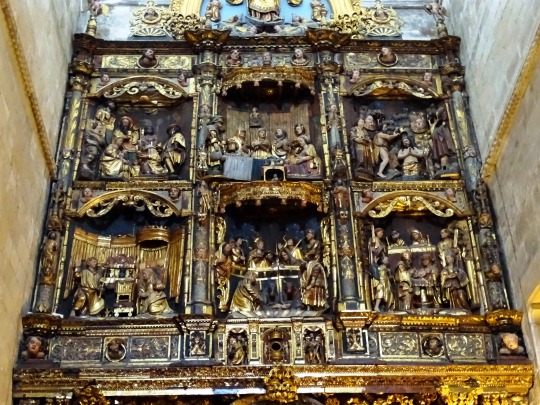

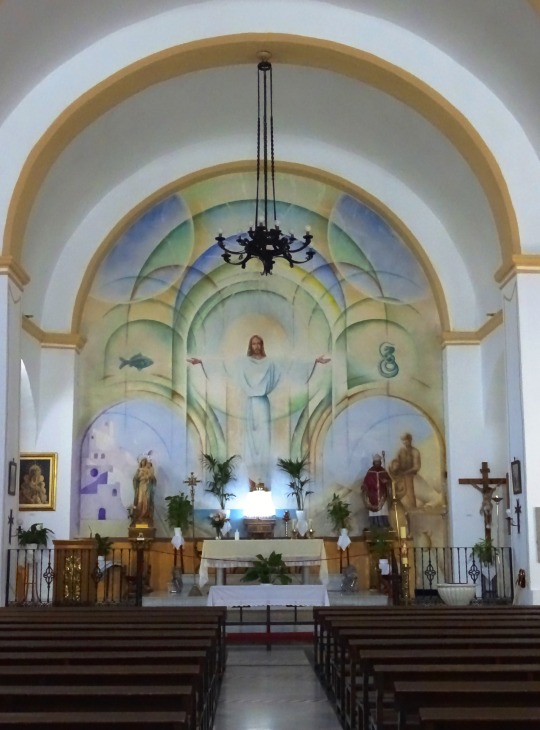
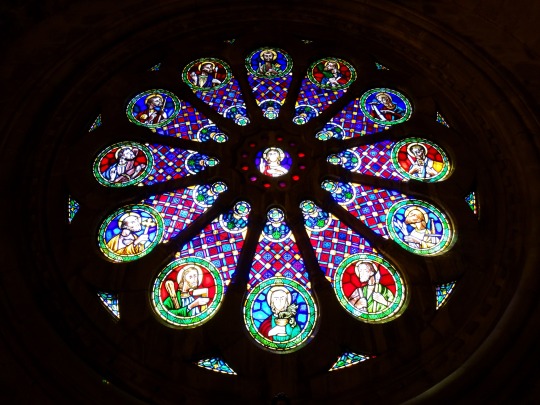
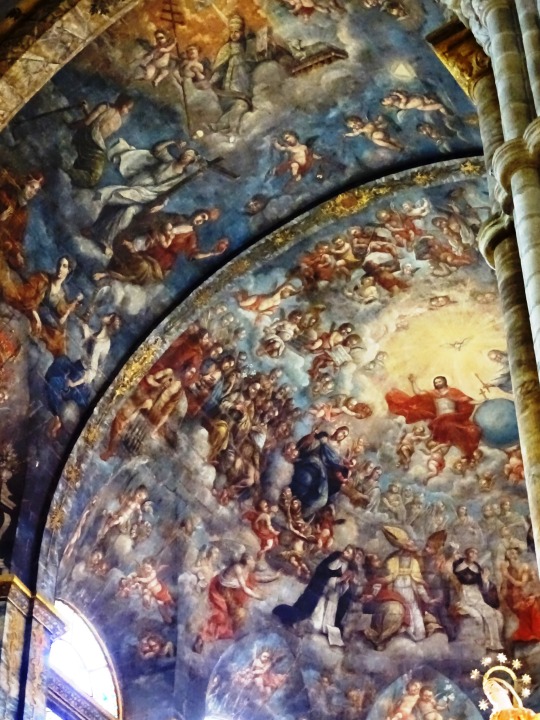
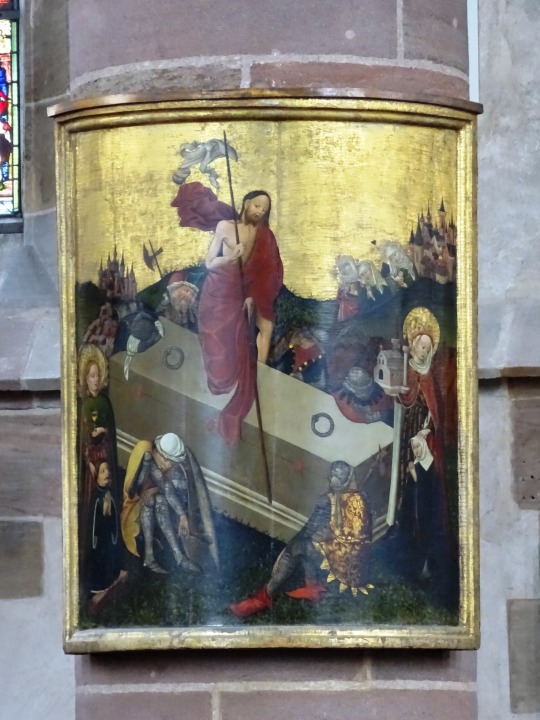
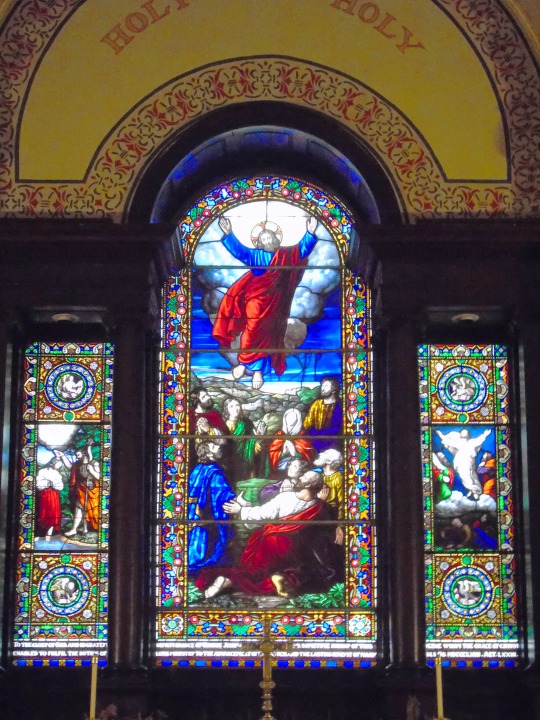

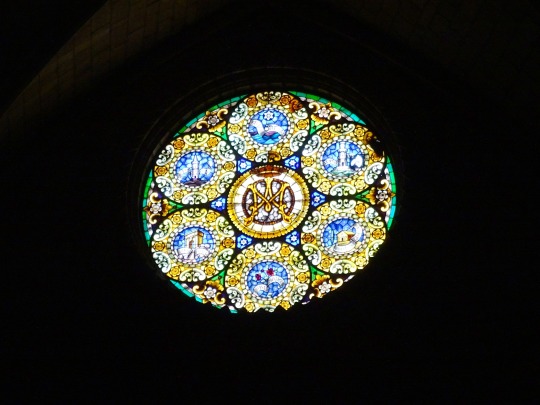
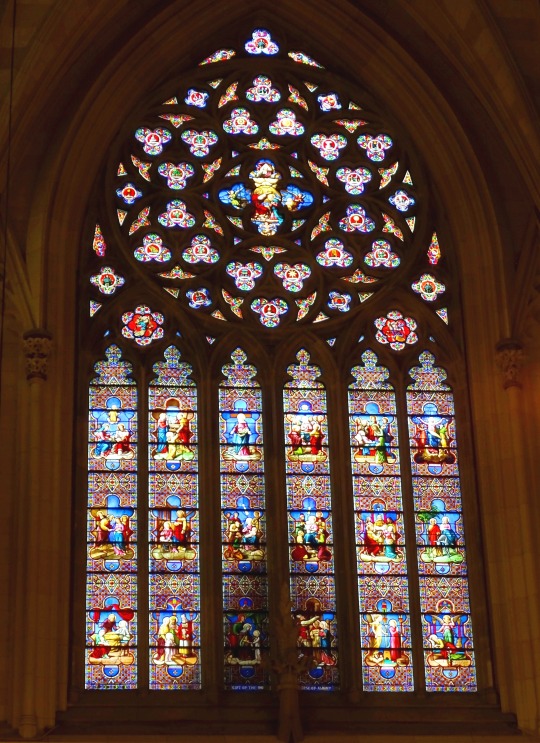
Ascension Day
We commemorate Jesus Christ’s ascension into heaven (as per Christian belief) by celebrating Ascension Day, which occurs on the Thursday, which is 40 (or 39) days after Easter. This year, it will take place on May 9. Known by multiple names — The Feast of the Ascension, The Ascension of Jesus, Ascension Thursday, Holy Thursday, or Solemnity of the Ascension of the Lord — this is a Christian holiday that doubles as a public holiday in many countries like Austria, Belgium, Denmark, Germany, France, Switzerland and more.
History of Ascension Day
One of the earliest Christian festivals, Ascension Day marks the end of the Easter season. This event is celebrated primarily by Catholics and Anglican Christians; most Protestant churches do not follow this tradition anymore. The date, too, differs in different geographic locations. Western Churches prefer to use the Gregorian calendar for calculating this date, while many Eastern Orthodox Churches calculate this date according to the Julian calendar. As a result, their celebrations occur at a later date than the Western event.
As per the New Testament in the Bible, after Jesus Christ’s crucifixion on Good Friday, he was resurrected from the dead in three days, on the day we know as Easter Sunday. For 40 days after this, he stayed with his Apostles (the primary disciples of Christ) to instruct them on how to carry out his teachings. As the Bible says, at the end of day 40, Jesus Christ and his disciples went to Mount Olivet (or the Mount of Olives), near Jerusalem. After asking them to stay, Christ then ascended to heaven to take his seat at the right hand of God, under the gaze of his disciples. To Christians, the ascension signifies that Christ completed his work on Earth and allowed him to prepare a place for his followers in heaven.
Initially a part of Easter celebrations, this day was later separated from Easter, along with Pentecost. Celebration of Pentecost ends the cycle of Easter-related events in the Christian calendar.
Ascension Day timeline
68 A.D. The Tradition Begins
Ascension Day begins to be observed, albeit with two other holidays — Easter Sunday and Pentecost.
300 A.D. Ascension Day Develops As A Separate Tradition
A decree declares this celebration now must be observed separately — it is moved to 40 days after Easter.
385 A.D. First Written Evidence Appears
We see the very first piece of written evidence that the Ascension Day Feast is celebrated.
5th century Ascension Day Starts Appearing In Art
Christian art showcases this holiday.
6th century Art Begins To Reflect Different Versions
Syria develops a different version of the Ascension, which is later adopted by Byzantine art.
18th century Germany Celebrates Father's Day
Ascension Day coincides with Father's Day in Germany — they celebrate Jesus returning to the Holy Father.
19th century Germany Celebrates With Colourful Parades
To replicate the way the Apostles walked with Jesus, Christians begin to host colorful parades as a commemoration.
How To Observe Ascension Day
Go to church
Attend church processions
Listen to hymns
Learn how your local church celebrates this day. Take some time to attend a Mass or Christian church service. Clarify the details before you go, as these services differ based on whether the church is Protestant or Catholic.
Tradition says this holiday is observed by a three-day procession, then the feast itself, which includes a procession of torches and banners to symbolize Christ’s journey to the Mount of Olives and entry into heaven. While your local church might not have such grand festivities, find out if they are still carrying out a procession.
Listening to hymns is a traditional part of Ascension Day celebrations. A medley of these religious songs can have you humming along for days. Even popular artists have been known to hum a hymn or two over the years. Check out Carrie Underwood’s ‘Something In The Water,’ or U2’s ‘Where The Streets Have No Name,’ or even John Legend’s ‘Preach.’
Facts About Ascension Day
In Sweden, people go on early morning walks
The British celebrated by 'beating the willow'
Welsh people don’t work on this day
Portugal celebrates by keeping wheat in their houses
Indonesia has a public holiday on Ascension Day
Many people go out into the woods at 3 AM or 4 AM to hear the birds at sunrise, believing that hearing a cuckoo from the east or west brings them good luck — this activity is called ‘gökotta.’
In the olden days, as young boys were driven along the parish boundaries, they were beaten with willow branches to drive away evil.
It is more than a holiday celebration in Wales — Welsh people believe that it is unlucky to do any work on Ascension Day.
Traditionally, rural Portuguese households keep wheat in their homes throughout the coming year — this day is associated with peace and prosperity and, to them, wheat symbolizes prosperity.
Despite Christianity being a minor religion in Indonesia, Ascension Day is designated as a public holiday.
Why Ascension Day Is Important
It is an opportunity for reflection and to gain inner peace
We learn about Christian traditions
It helps us expand our cultural horizons
Instances, where we can simply sit, reflect, and learn the true meaning of peace, are rare in our busy worlds. This is why we recommend holding onto such chances with both hands. Ascension Day church services center around this theme. If you are not a religious or church person, simply take a moment to sit by yourself and reflect on your journey so far and how you would like to continue. There’s no better way to celebrate this day than by centering yourself and your thoughts.
Expanding our knowledge is good for us. Plus, learning about Ascension Day not only helps us expand our store of general knowledge, but also inspires us to observe some of the traditions.
Such traditions have been prevalent for a long time, and have taken on varying degrees of importance around the world. Even festivities change as per the customs of a certain region. Learning more about these traditions changes our views of cultures and gives us extended knowledge of people from other nations.
Source
#Mojácar Pueblo#Church of Santa Maria#Lisbon Cathedral#Lisbona#interior#stained glass window#Ascension Day#Auffahrt#long weekend#9 May 2024#39 days after Easter#Saint Mary's Cathedral#Lugo Cathedral#Spain#Portugal#Holy Trinity Anglican Cathedral#Québec#Quebec City#Canada#Germany#Stadtpfarrkirche Unserer Lieben Frau#Nuremberg#Nürnberg#Solsona Cathedral#St. Patrick's Cathedral#Manhattan#New York City#USA#architecture#original photography
2 notes
·
View notes
Text
I'm not a Christian, but I went to Christmas Eve service at the Anglican Cathedral tonight as is my custom. I go alone and sit in a room full of strangers and listen to old stories and sing old songs and cry at least once. It's a tradition I hold dear, and one I haven't been able to do for several years due to circumstances.
I was raised mainly Episcopalian (American Anglican), with most of elementary at Catholic schools. We also did Vacation Bible School at some mainline protestant church for a week or two most summers, probably because it was free childcare and was next to mom's work. But we didn't talk about religion or beliefs at home basically at all. My parents totally outsourced that.
I honestly liked Catholic school (other than the bullying, but that was a whole different issue). I liked going to Mass. It was at a Cathedral school, so the church was big and full of beautiful stained glass and statues and art. I remember a marble statue of Mary crushing a serpent beneath her bare foot, standing on the globe. And I loved the music. I loved singing the hymns. I loved the organ. I loved the ritual of all of it, too, the prayers and the vestments and the holy water and the standing up and the kneeling. It was clear and intentional and once you knew the rules (which they taught us), it felt good to be part of something where everyone acts together.
When I was 11-12, we moved and started going to the church near our house. Because I was a smart and responsible child and they were short on adults, I wound up teaching Sunday School for a year or so at around 13. I have no memory of what I was supposed to be teaching them. But despite mom strongly hinting (though never actually outright asking because we don't just ask people in my family), I never went to confirmation classes.
I still loved the ritual and the art and the building itself - a late 19th century replica of an older English church, lovely and un-modern and smelling of wood polish and candle wax. And, of course, I loved the music. I sang in the choir for years.
But sometime in early adolescence, I didn't so much lose faith as realize I didn't have any to begin with.
And, oh, I wanted to! My best friend was the child of a Methodist minister in town, and I went to their youth group (I was the only kid around my age in my congregation), and we'd go on retreats some times. And they'd talk about being filled with the holy spirit and living Jesus, and it seemed so comforting and ecstatic at the same time. I wanted it so much! The only time I felt close to what they seemed to describe was while I was singing. But once the music stopped, it was gone.
(Much, much later, I finally had that religious experience, but not with Jesus or the Holy Spirit or the Christian God. And it was everything I wanted then. Turns out I just needed a different form of deity. But this is not that story.)
But try as I might, Jesus just wasn't my guy.
There was a bit of queer rebellion in there, too. The new priest, who I liked (and who many years later extra-legally married my spouse and I), and who had shocked the congregation by preaching a pro-choice sermon on his first Easter, came out as gay. Now, the Episcopal Church as a whole didn't have a problem with this. They either recently had or were soon to have their first openly gay bishop. However, some of the old guard at the church did have a problem, and he got forced out. So like, there was apparently no theological problem with gay people. Just a cultural one. I wasn't even aware I was queer yet. I just thought it was hypocritical and shitty.
So why do I go to church by myself on Christmas Eve? I go as a way of honoring my family and my ancestors. And I go for myself.
There's power in rituals. Personal rituals have a certain amount of power. But collective rituals even more so. And rituals that have been done in more or less the same way at more or less the same time for hundreds of years are very powerful indeed.
How that power is used is important. I won't go to just any church. I've been in churches where they were actively praying against me and my family, or praying against bodily autonomy, or calling people I care about sinners. To my mind, that's an abuse of power and a failure to understand the words of the God you profess to follow.
(The Jesus I was raised with loved the outcast, stood with the marginalized, and cared for those whom others ignored or forgot. I have no beef with him. He's just not my dude.)
So I'm particular about what churches I go to, and what prayers I lend my power to. Tonight, the litany of prayer started with the King (which, lol, I forget we technically have one of those; he didn't get my prayers, sorry Charlie), but then was for the leaders of First Nations for true reconciliation, and then for the unhoused in our city. We prayed for Ukraine. We prayed for the Earth and the oceans (which included a fairly cutting jab at spending all our money on space exploration while the Earth burns) as the only source of life. We prayed for the people of Gaza and the West Bank and Israel, too, that there would be peace and an end to the humanitarian crisis and a just resolution. We prayed for our pets. We prayed for music and art and creative expression.
The power of all those people lending their thoughts and prayers, in this service at this time, with all the ranks of centuries of spiritual ancestors behind it, was palpable.
And I sang the old songs, together with a couple hundred strangers. I sang the songs my parents sang, and their parents, and their parents. "Silent night, holy night." I sang words my ancestors have sung or said or heard for a thousand years. "Lamb of God who takes away the sins of the world, have mercy on us." I heard the words they heard. "And there were shepherds abiding in their fields keeping watch over their flocks by night." And I say to them that their beliefs may not be my own, but that they are not forgotten. They are loved, and I am reaching out to them with words they will understand.
May Christmas be merry for all who celebrate. And for those who don't, may you find joy and connection in the ways that best serve you.
5 notes
·
View notes
Text
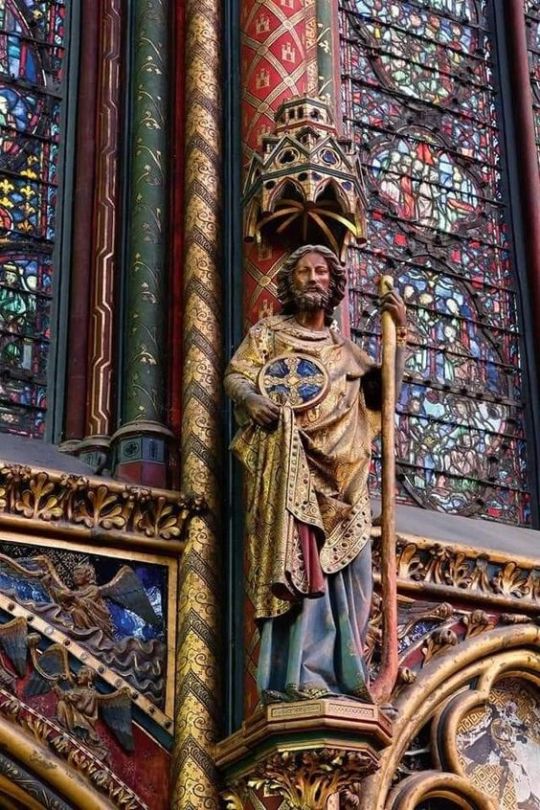
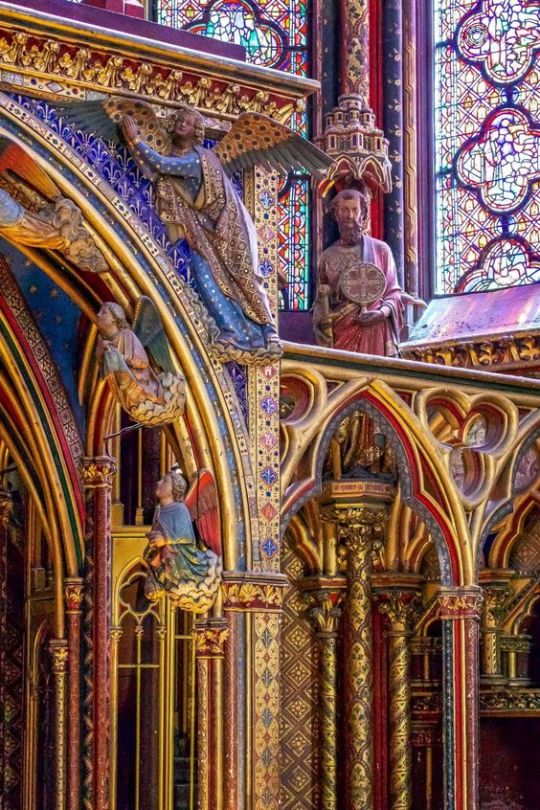
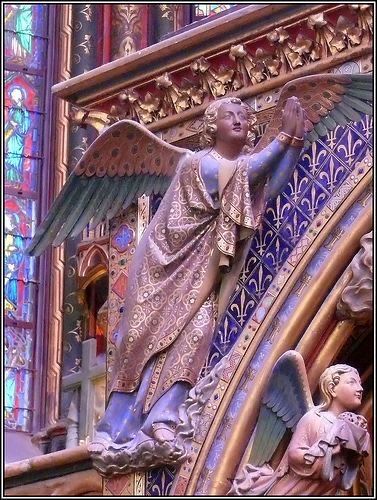
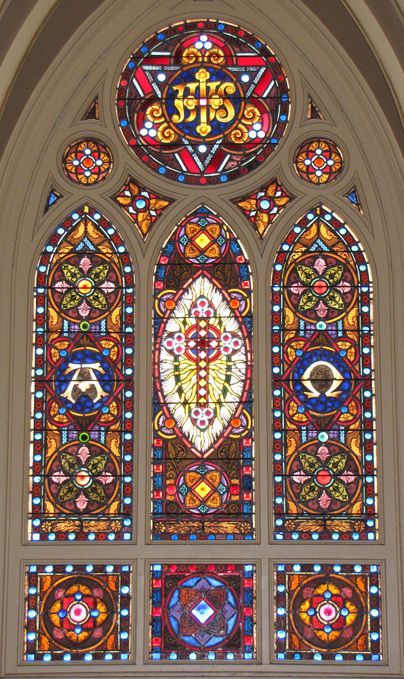
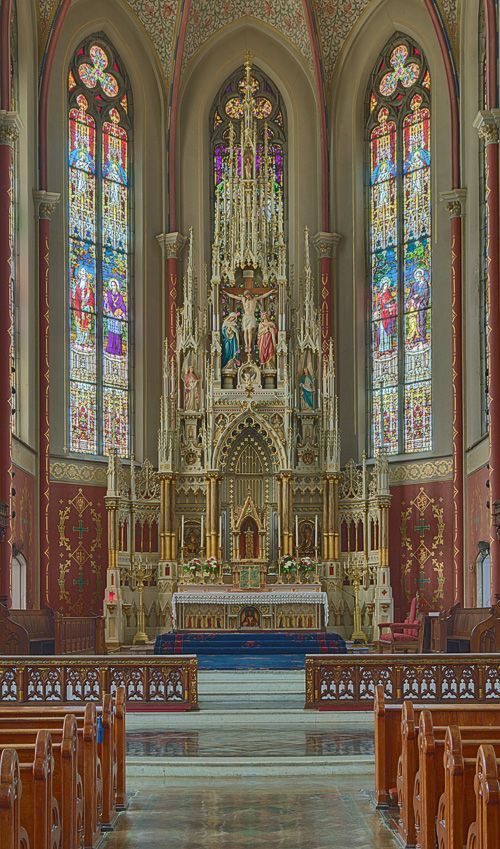
Laus Deo "Hail, Thou Source of Every Blessing"
https://youtu.be/VGCoI_ElK9Y?si=XttSX-iLL0ANJScQ
1 note
·
View note
Photo

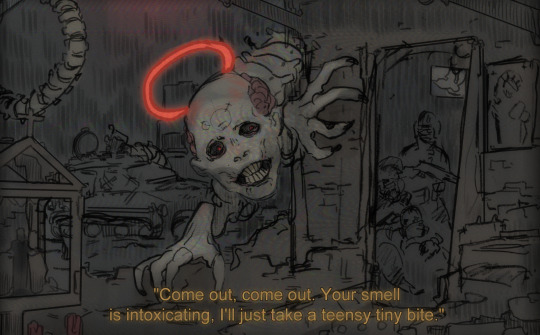
THREE WISE MEN
"I was becoming engrossed by their teachings, what started off as horror and disgust slowly morphed into a appreciation for the Priests of the Church of Extinction. A paradoxical question I had when I began writing this journal was “why would they dedicate themselves to saving and prolonging the lives of their followers? After all if the goal was total human death, it would seem rather contradictive.” I was so naïve back in those days. No one can appreciate the gift of death, the release from life’s grip, without suffering. Only when one is truly worn down to the bone, can they fully embrace oblivion.
I trusted them, and with their guiding hands I am not ashamed to admit this, I released many street urchins and ladies of the night from their existence. They thanked me Josef, I saw happiness in their eyes. I left you all the proof you would need of my deeds brother, this is a confession, not of guilt, but of overwhelming mirth. Maybe you will learn too. As to my whereabouts, you need not worry, I have gone on a pilgrimage to the pit of Azakov far north of our beloved Anglican Commonwealth.
I promise you, and my beloved Martha, that I will return, blessed in the form of sulfur, Iron, and Frost. Inhale the smell of ammonia, you will know me then. "
ENGEL OF MINE
1930, Eastern reaches of Siberia, journal entry Mikael Konstantinov, member of the 10th Red Army group. Lost deep within Kiber-Tvar territory, night fall.
We failed to exit the ruins of City 16 (Yakutsk), our breakthrough was foiled not by the undead, but by the Engel. It spoke to us, it was a messenger from God, told us too not be afraid. Many of us went with it willingly to paradise, it unhinged its jaw and they all walked in. How lucky, they are saved. ME and two others ran, into danger, we hid like little rats. The Engel was out there waiting for us, it’s pleasant smile inviting us. Our comrades sang in its long throat, such beautiful peaceful hymns, so enticing. WE didn’t want to go out.
“Come out, come out, my children, you must be so cold and starving. Please come out, be not afraid, for I have taken this form due to the wickedness of this fell earth, yet you will see such wonders inside of me. Let me save you.”
WE DIDN’T LISTEN, WE DIDN’T WANT TO LISTEN. The thing that crawled out of its mouth, it was, WAS, our superior. It spoke to us, spoke of such jubilant warmth, we just needed to go outside…. Why didn’t it want to come inside? “Idolatry, idolatry” he said to us. It burned the Engels heart to see such things. Things. Things. We stayed there until day broke. Luger, my friend had passed away, he bled out in my arms. Ivan was still awake, his eyes blood shot, his gun still pointed at the door.
I couldn’t hear it anymore. The Engel was gone.
here's a link to my webcomic, if ya curious.
https://www.webtoons.com/en/challenge/daemon-x-core/list?title_no=763233
16 notes
·
View notes
Text
didn’t want to get into this on the last post cause it would be derailing of a very high order, so im making my own post about it:
if you are under the impression that christianity is split into catholics (who have mysticism, stained glass, hymns, literal communion) and evangelicals/protestants/etc (who have bare churches, contemporary music, symbolic communion, watery theology) PLEASE read up on more non catholic specific denominations.
lutherans and anglicans (potentially presbyterians? unsure) have many if not all of those things. i was raised and am lutheran and we’ve always believed in a literal communion, we have vestments, we have hymns, we have liturgy, we have rituals, we have sacraments, we have stained glass. like. “protestants” werent the ones getting rid of icons, that was calvinists. MOST of modern day western christians that you’re thinking of come from calvinism (after luther) and 17th century puritanism. lutherans still get their core texts from, y’know, luther, back in 15-something. a lot of people even don’t consider lutherans to be entirely protestant but somewhere between the two.
not that there’s never any overlap, but like. please im so sick of it. (and this doesn’t even get into how orthodox christians also exist and are neither catholic nor protestant)
#x#christianity#lutheranism#also like in my experience there’s always fun rivalry between catholics and lutherans but there’s also a deep respect#because like we’re more similar to each other than either of us are to the majority of denominations in (limited via my experience) the us#but for obvious reasons we don’t want to be just grouped in with catholics#neither of us wants that#frankly a lot of problems with modern christianity can be traced back to calvin#there’s a lot of interesting readings about that
6 notes
·
View notes
Text
“Fashionable Goodness: Christianity in Jane Austen’s England”: A Review
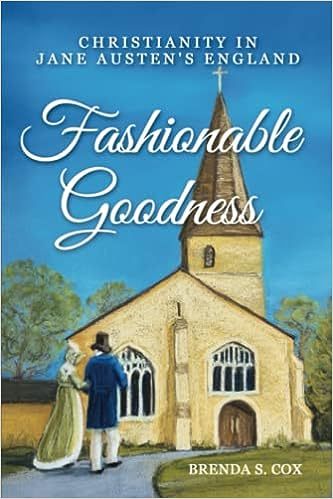
DESCRIPTION:
The Church of England was at the heart of Jane Austen's world of elegance and upheaval. Fashionable Goodness: Christianity in Jane Austen's England explores the church's role in her life and novels, the challenges that church faced, and how it changed the world. In one volume, this book brings together resources from many sources to show the church at a pivotal time in history, when English Christians were freeing enslaved people, empowering the poor and oppressed, and challenging society's moral values and immoral behavior.
Readers will meet Anglicans, Dissenters, Evangelicals, women leaders, poets, social reformers, hymn writers, country parsons, authors, and more. Lovers of Jane Austen or of church history and the long eighteenth century will enjoy discovering all this and much more:
Why could Mr. Collins, a rector, afford to marry a poor woman, while Mr. Elton, a vicar, and Charles Hayter, a curate, could not?
Why did Mansfield Park's early readers (unlike most today) love Fanny Price?
What part did people of color, like Miss Lambe of Sanditon, play in English society?
Why did Elizabeth Bennet compliment her kind sister Jane on her "candour"?
What shirked religious duties caused Anne Elliot to question the integrity of her cousin William Elliot?
Which Austen characters exhibited "true honor," "false honor," or "no honor"?
How did William Wilberforce, Hannah More, and William Cowper (beloved poet of Marianne Dashwood and Jane Austen) bring "goodness" into fashion?
How did the French Revolution challenge England's complacency and draw the upper classes back to church?
How did Christians campaigning to abolish the slave trade pioneer modern methods of working for social causes?
Explore the church of Jane Austen's world in Fashionable Goodness: Christianity in Jane Austen's England.
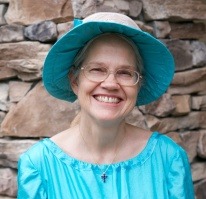
AUTHOR BIO:
Brenda S. Cox is fascinated by the history of Jane Austen's time and the nuances of Austen's delightful and insightful books. Her own faith led her to start exploring the church in Austen's novels and world. She was excited to find new depths in Austen's works and astonishing connections with world-changing movements during this pivotal era in history. She spent almost ten years researching, including visits to England, hunting up many, many books and resources, some obscure and not easily available, and digging through them to answer her multiplying questions. So, she decided to write this book to provide all that information in one accessible place for others who love Jane Austen or history.A popular speaker at Jane Austen Society of North America (JASNA) meetings, Brenda Cox has shared about church-related topics, ranging from satirical cartoons to country curates, at regional and national meetings, and contributes regularly to their academic journal, Persuasions On-Line. She also loves connecting regularly with thousands of Austen fans at Jane Austen's World and on her own blog, Faith, Science, Joy, and Jane Austen. Brenda first discovered Austen as a young mom living overseas, when she came across a copy of Emma. After devouring it, she immediately bought a complete set of Austen's novels. Each time she re-reads the books, she falls in love again with Austen's humor, deep insights into life and human nature, and finesse as a writer. She is now passing that love on to her grandchildren, reading the novels aloud together as Austen's own family did. Brenda loves learning and appreciated the privilege of homeschooling her four children because she got to learn so much along with them. She also enjoys cross-stitching Jane Austen projects and reading a wide range of books. She worked internationally for many years and values the beautiful variety of cultures and languages, which she expressed in her book on languages, Who Talks Funny? She earned a bachelor's degree in chemical engineering, a master's in applied linguistics, and, now in her third career, is loving writing about Jane. Fashionable Goodness: Christianity in Jane Austen's England is Brenda S. Cox's first book related to Jane Austen. Please visit her at brendascox.wordpress.com and as brendascoxregency on Facebook.
MY THOUGHTS:
For awhile now I’ve been searching for something - be it a book, documentary, or YouTube video that explains the Christianity/religious beliefs of the Regency Era. Specifically focusing on Jane Austen and her books, because Austen was a clergyman’s daughter, she was a Christian, and her convictions shaped her worldview and influenced her writing. As a 21st century American woman, I am a Christian and Protestant, however my understanding and worldview differs from Austen’s in certain respects. I also needed to read it for my own Regency Era novel, to make it more authentic.
“Fashionable Goodness: Christianity in Jane Austen’s England” by Brenda S. Cox has been on my radar for a few months now and I recently bought it and just devoured it. Not only did it address my questions about Jane Austen and her faith, but it broke down how the Anglican church functioned; the basic tenants of faith; baptism; Communion; forgiveness; prayer; the differences between rectors, vicars, and curates (there’s also more than one type of curate, didn’t know that!), livings. The book also covers the Evangelical movement and how the Methodist church began, and Austen’s feelings on Evangelicals, and how many other Anglicans felt about them. We’re also introduced to devout Christians of the era, some of who were contemporaries of Austen. The Wesley brothers, John Newton (author of hymn “Amazing Grace”), Hannah More (author of novels and tracts, and champion of reform), William Wilberforce (politician who dedicated most of his life to ending slavery and the slave trade); etc…
As I am rereading Austen, I feel I can better understand the characters’ religious convictions and when the words principles or serious subjects are used, I know what she is referring to. Though this book is primarily about Austen, church history, and religious beliefs, it did encourage me to examine my own faith and had me researching and going to the Scriptures. "Fashionable Goodness" is a must-read for any Austen-lover and Christian!
3 notes
·
View notes
Text
Today in Christian History
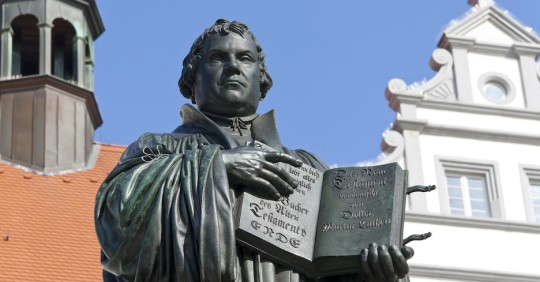
Today is Tuesday, October 31st, 2023. It is the 304th day of the year (305th in leap years) in the Gregorian calendar; 61 days remain until the end of the year.
415: Co-emperors Honorius and Theodosius II issue penalties against Montanists and against any land-owner who permits them to assemble on his property. Montanist meeting places are to be turned over to orthodox churches.
1517: Martin Luther (pictured above) nails a challenge to a debate on the Wittenberg church door. It consists of ninety-five statements, or theses, against the practice of indulgences—theses which he is willing to defend. The theses will be widely distributed and precipitate the Reformation.
1731: Catholic archbishop Leopold von Firmian of Salzburg, Austria, issues an edict expelling all Lutherans from his territory. About twenty thousand people have to leave. Many have nowhere to go and freeze to death in the coming winter.
1754: Provost Acrelius writes to the Consistory of Upsala, requesting the suspension of Rev. John Lidenius from the Swedish ministerial office because he preaches in English.
1772: Thomas and Samuel Green of New Haven publish “A Sermon” by Indian preacher Samson Occum which he had given the month before at the hanging of an Indian man for murder. The sermon becomes wildly successful, going through ten editions in eight years.
1816: Robert Moffat sails for South Africa where he will establish a mission work. Mission leaders had been reluctant to send him, believing he was unqualified. He will become a world-famed mission leader.
1832: George Washington Doane is consecrated Episcopal bishop of a diocese in New Jersey. He will be remembered by Christians for his hymns, especially “Softly Now the Light of Day.”
1871: Vasilii Ivanov is baptized in Tbilisi, Georgia, in the Kura River, an event considered the starting point of the Baptist movement in Azerbaijan, because he will spread the Baptist faith throughout Baku province.
1877: Samuel Schereschewsky is consecrated Anglican Bishop of Shanghai. Developing Parkinson’s disease, he will resign his position, and spend the rest of his life completing a translation of the Bible into Wenli (a Chinese dialect), typing hundreds of pages with the one finger that he could still move.
1879: Death of Jacob Abbott, American Congregationalist author. He wrote many groundbreaking works of children’s fiction, including the instructional Rollo series and the warm Franconia novels.
1920: Baptism of Spetume Florence Njangali in Saint Peter’s Cathedral, Hoima, Uganda. She will become a leader in the effort to obtain theological education for women and their ordination as deaconesses in the Anglican church of Uganda.
1992: Pope John Paul II admits that the Roman Catholic church erred three hundred and sixty years earlier when it condemned Italian astronomer Galileo.
1999: Catholics and Lutherans issue a joint statement on justification in Augsburg, Germany, declaring that “a consensus in basic truths of the doctrine of justification exists between Lutherans and Catholics.”
2010: Islamic terrorists besiege Our Lady of Perpetual Help Church in Baghdad, massacring most of the 120 worshipers inside, including a three year old boy who pleaded with them to stop killing.
13 notes
·
View notes